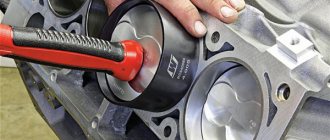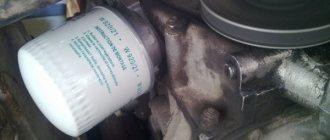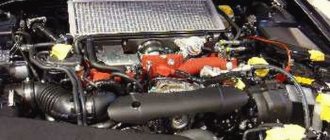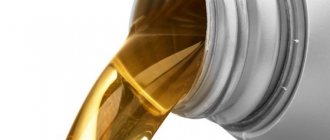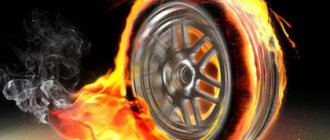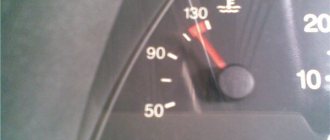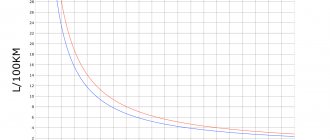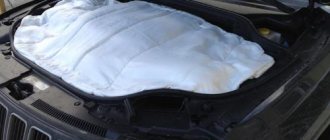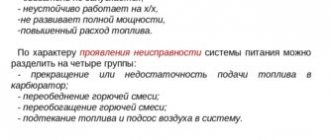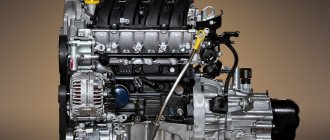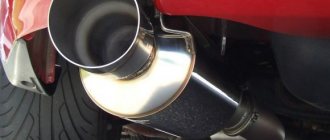| Power | |
| N , P , W = d A dt {\displaystyle N,P,W={\frac {dA}{dt}}} | |
| Dimension | L2MT−3 |
| Units | |
| GHS | erg−1 |
This term has other meanings, see Power (meanings).
Power
- a scalar physical quantity, generally equal to the rate of change, transformation, transfer or consumption of system energy. In a narrower sense, power is equal to the ratio of work performed over a certain period of time to this period of time [1].
Units
The International System of Units (SI) unit of power is the watt (W), equal to one joule per second (J/s). In theoretical physics and astrophysics, the erg per second (erg/s) is often used as a unit for power.
Another common, but now outdated, unit of power measurement is horsepower.
In its recommendations, the International Organization of Legal Metrology (OIML) classifies horsepower as a unit of measurement “which should be withdrawn from use as soon as possible where it is currently used and which should not be introduced if it is not in use.”[2 ]. Relationships between power units
| Units | kW | MW | kgf m/s | erg/s | l. s. (met.) | l. s. (eng.) | |
| 1 watt | 1 | 10−3 | 10−6 | 0,102 | 107 | 1,36·10−3 | 1,34·10−3 |
| 1 kilowatt | 103 | 1 | 10−3 | 102 | 1010 | 1,36 | 1,34 |
| 1 megawatt | 106 | 103 | 1 | 102·103 | 1013 | 1,36·103 | 1,34·103 |
| 1 kilogram-force meter per second | 9,81 | 9,81·10−3 | 9,81·10−6 | 1 | 9,81·107 | 1,33·10−2 | 1,31·10−2 |
| 1 erg per second | 10−7 | 10−10 | 10−13 | 1,02·10−8 | 1 | 1,36·10−10 | 1,34·10−10 |
| 1 horsepower (metric) | 735,5 | 735,5·10−3 | 735,5·10−6 | 75 | 7,355·109 | 1 | 0,9863 |
| 1 horsepower (English) | 745,7 | 745,7·10−3 | 745,7·10−6 | 76,04 | 7,457·109 | 1,014 | 1 |
Why is engine power measured in horsepower?
“While our spaceships roam the vastness of the Universe...” we continue to measure engine power in horsepower. Where did this “horsepower” come from and why in the age of high technology, wireless information transmission and space exploration do we continue to use this unit of measurement?
The term “horse power” was coined in 1789 by Scotsman James Watt. In those days, either traditional horsepower or the Newcomen steam engine were used to raise the water that accumulated at the bottom of the mines. James Watt managed to design a machine that was significantly more efficient than Newcomen's brainchild and consumed 70% less fuel.
Despite the obvious advantages, conservative mine owners were in no hurry to acquire Watt's development. In order to sell your car, it was necessary to describe its advantages. This means comparing it with what most mine owners used - a horse.
Watt was faced with the task of measuring the strength with which a horse could perform any work. This is why he coined the term horse power. It is still unknown how exactly Watt carried out his experiments, but he may have watched horses pull a barrel out of a mine. After making many observations, James found that the average speed of horses pulling a 160 liter (≈1 barrel) barrel was 3.6 km/h (≈2 mph). Multiplying 2 mph by ½ barrel (we are counting the power of one horse) gives the result 1 mph × 1 barrel, which in smaller measurements is equal to 33,000 foot-pounds*. If we convert the resulting value into Watts (which, by the way, were named after James Watt), we find out that one horsepower equals ≈745.699 W. This value is called "Mechanical Horsepower" and is used in the US and UK. In Russia and Europe, they use Metric horsepower, which determines the power that must be expended to lift a load of 75 kg per 1 meter. Its value is ≈735.49 W.
Calculations are calculations, but what happened to James Watt? Using the new term, he was able to clearly show the mine owners how many horses his miracle machines could replace. The result was not long in coming: the engineer gained popularity and marked the beginning of the industrial revolution in England, and the term “horsepower” he introduced became so successful that it took root in languages around the world for centuries.
* Energy required to lift a 1 lb (453.6 g) body to a height of 1 foot
Images from the following sites were used for publication:
https://adland.tv/ooh/porsche-911-rear-horsepower-billboards-china
If you find an error, please select a piece of text and press Ctrl+Enter.
comments powered by HyperComments
Mechanical power
If a force acts on a moving body, then this force does work. Power in this case is equal to the scalar product of the force vector and the velocity vector with which the body moves:
| N = F ⋅ v = F ⋅ v ⋅ cos α , {\displaystyle N=\mathbf {F} \cdot \mathbf {v} =F\cdot v\cdot \cos \alpha ,} |
where F
- force,
v
- speed, α {\displaystyle \alpha } - angle between the vector of speed and force.
A special case of power during rotational motion:
| N = M ⋅ ω = 2 π ⋅ M ⋅ n 60 {\displaystyle N=\mathbf {M} \cdot \mathbf {\omega } ={\frac {2\pi \cdot \mathbf {M} \cdot \mathbf {n} }{60}}} |
M
is the moment of force, ω {\displaystyle \mathbf {\omega } } is the angular velocity, π {\displaystyle \pi } is the number,
n
is the rotation frequency (revolutions per minute, rpm).
Formulas for measurement
Power is a quantity that is directly related to other indicators. Thus, it is directly related to time, force, speed, force vector and speed, force and speed modulus, torque and rotation frequency. Often, in formulas when calculating the electrical power type, the number Pi, the resistance indicator, instantaneous current with voltage in a specific section of the electrical network, active, total and reactive power are also used. A direct participant in the calculation is the amplitude with angular velocity and the initial current strength with voltage.
You might be interested in Multimeter probes
In the calculations of the hydraulic power type, pressure and fluid flow take part. Often the number of engine revolutions for a specific period of time is taken into account.
Additional Information! To calculate thrust, efficiency with other operating parameters of the device, temperature, friction force and conductive resistance with reactive loads are studied.
Basic formulas for measurement
Electric power
Main article: Electrical power
Electrical power is a physical quantity that characterizes the speed of transmission or transformation of electrical energy.
Instantaneous electrical power P ( t ) {\displaystyle P(t)} of a section of an electrical circuit:
P ( t ) = I ( t ) ⋅ U ( t ) {\displaystyle P(t)=I(t)\cdot U(t)\,} where I ( t ) {\displaystyle I(t)} is instantaneous current through a section of the circuit; U ( t ) {\displaystyle U(t)} is the instantaneous voltage in this section.
When studying AC networks, in addition to instantaneous power corresponding to the general physical definition, the following concepts are also introduced:
- active power equal to the average value of instantaneous power over the period,
- reactive power, which corresponds to energy circulating without dissipation from source to consumer and back,
- total power, calculated as the product of the effective values of current and voltage without taking into account phase shift.
Instruments for measuring electrical power
| This section is not completed. You will help the project by correcting and expanding it. |
- Wattmeters (including varmeters)
Measuring instruments
To measure power, a wattmeter, voltmeter, varmeter and multimeter with tester are used. They are widely used in various fields of energy with industry, communications, transport, science, medicine and everyday life. In everyday life, they are used to calculate the electrical energy consumed and calculate possible damage to the diodes. It is worth noting that all existing measuring instruments are divided into panel with portable and stationary, indicating with recording, evaluating and comparing.
The listed devices are connected in parallel to the load or source of electricity. Wattmeters with varmeters differ from others in that they can determine an indicator in an electromagnetic signal. They are divided into those designed for measuring low and high frequencies. As for voltmeters, they are analog, digital, liquid-compensated, pulse, phase-sensitive and selective.
Multimeters are combined devices. They, like voltmeters, are divided into digital and analog. They are used to calculate both voltage and electrical capacitance with inductance, temperature, current and resistance.
Wattmeter as the main measuring instrument for electrical appliances
Hydraulic power
Main article: Volumetric hydraulic drive § Power of a volumetric hydraulic drive
The power of a hydraulic machine or hydraulic cylinder is equal to the product of the pressure drop across the machine (the pressure difference at the inlet and outlet) and the fluid flow rate:
NH = QH ⋅ PH , {\displaystyle N_{H}=Q_{H}\cdot P_{H},} where QH {\displaystyle Q_{H}} is liquid flow rate, m3/s; PH {\displaystyle P_{H}} — pressure drop, .
For example, the NP-89D pump found on the Su-24, Tu-134 and Tu-154 has a capacity of 55 l/min (~ 0.000917 m3/s) at a pressure of 210 kgf/cm2 (21 MPa)[3] - therefore, its hydraulic power is approximately 19.25 kW.
Measure motor power
The power of an electric motor is composed of active and reactive components. Enterprises are subject to a penalty tariff. Therefore, it is important to understand the measured quantities.
The instructions for current clamps write: evaluate the root mean square current. Pure mathematics.
This means: the device makes a sample of a certain interval, takes the root of the sum of squares of individual measurements, divided by the total number.
Let's compare it to averaging over a certain period of time. Active current, total, reactive (hardly). The question needs to be clarified: the current clamps shown in the photo with enviable regularity give the power of the devices 11% below the nominal value.
Links
- Electrical work and power
- The influence of the shape of electric current on its action. Radio magazine, number 6, 1999
- Hydraulic power and efficiency of centrifugal pumps
To improve this physics article, it is advisable to:
|
The difference in torque between a small car with a gasoline or diesel engine
It is generally accepted that almost all small cars have high-torque engines, as well as cars with diesel engines. Drivers of diesel vehicles especially notice rapid acceleration even at low revs. When they boast, they most often say that all the power lies in it, in the torque. Now it’s clear: torque, no less than horsepower, is an important characteristic of an iron horse. You should look at it first of all when buying a new car, as well as when choosing a used one.
Horsepower in transport taxation
Russia
| The style of this section is non-encyclopedic or violates the norms of the Russian language. The section should be corrected according to Wikipedia's stylistic rules. (October 24, 2017) |
In Russia, the amount of transport tax depends on the engine power in horsepower. Conversion to horsepower is carried out by multiplying the engine power, expressed in kW, by a multiplier equal to 1.35962 (that is, a conversion factor of 1 hp = (1 / 1.35962) kW is used). Although the issue is not regulated by law, the tax authorities advise that when converting into non-system power units (hp), round off to the second decimal place[7].
Each region has the right to increase or decrease the amount of tax within the limits of federal standards.
If the power is less than 100 hp. pp., then, for example, in the Moscow region 7 rubles/l are paid. With. per year, and if a little more - already 29 rubles/l. With. in year. Moreover, from 101 l. With. up to 150 l. With. the tax rate is the same. Thus, due to different power values, the price changes from less than 700 to several thousand rubles per year. This fact leads to annoying oddities. Thus, the power of the South Korean Hyundai Accent car is strictly 75 kW, that is, 102 hp. With. For an American car owner, the figure would be even more offensive: 100.7 hp, but in the USA the tax does not depend on horsepower. In the USA, some taxes (road, environmental) are included in the price of gasoline [ source not specified 3094 days
], in addition, you must annually pay a tax on personal property (personal property tax), directly proportional to the price of the car.
Other countries
In the past, in some countries (eg UK, Germany, Belgium, France, Spain) the transport tax was based on horsepower. In some countries, they abandoned the use of power for tax purposes (for example, in the UK in the forties they began to use car dimensions instead of power), in others (for example, in France), they began to use kilowatts instead of horsepower. The expressions “Caballo fiscal” and “Cheval fiscal” remain from those times.
In addition to using horsepower in transport tax calculations, in the Russian Federation this type of power unit is also used in insurance. Namely, when calculating the insurance premium for compulsory civil liability insurance of vehicle owners (in common parlance - “automobile insurance”).
